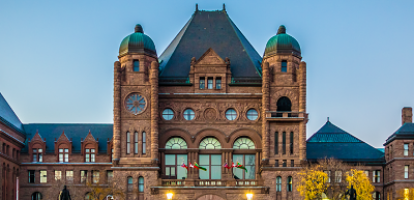To: Department of Finance
From: Thorsten Koeppl
Date: March 16, 2020
Re: For More and Swift Action, Just Look to Germany
Over the past two weeks, both the Bank of Canada and the Department of Finance have weighed in with emergency measures to limit the economic damage from COVID-19.
First was the Bank of Canada’s 50 basis point emergency rate cut on March 4. Then, in the span of three days, the federal government announced $1 billion in support, followed by a surprise 50-basis-point rate cut by the Bank, and finally another federal announcement to the tune of $10 billion in assistance through the Business Development Bank of Canada and Export Development Canada. And this likely won’t be enough, with the federal government admitting as much, saying significant fiscal stimulus will come this week. What should this stimulus look like?
We encourage readers of this piece to look at some other work coming out of this organization. In this memo we look abroad to Germany for some guidance.
On Friday March 6, Germany announced a dramatic new chapter in economic policy. The Minister of the Economy, Peter Altmaier, announced what amounts to unlimited support for German businesses and workers. He went as far as pointing out that “no sound enterprise should be pushed into insolvency, no job should be lost due to the Coronavirus”.
The response by the German government is not a surprise, as it can rely on a well-oiled machinery of economic policy tools. The publicly owned development bank KfW has €20 billion available immediately to support struggling businesses with emergency loans to bridge liquidity problems. But more importantly, the German government has announced that this support can be stepped up if necessary to virtually no limit, pointing to a maximum volume of guarantees and loans in the amount of half a trillion Euros. And it would appear from its announcements that a full-fledged stimulus program is ready to be launched, including equity injections by the government to business enterprises.
“We just put all weapons on the table and make clear that we are somehow bigger than the problem that we could face in the economy,” said Finance Minister, Olaf Scholz.
Of course, it helps that Germany regularly runs small surpluses. It also can borrow cheaply, at an interest rate of about negative (!) 1 percent for 10 years. This means you lend one euro to the German government and, 10 years later, get about 90 cents back. Moreover, well-designed automatic stabilizers are in place that buffer the economy against severe economic downturns.
The best example is “Kurzarbeit” where the German government pays a percentage of wages when companies reduce production in the wake of a severe recession. The tool is usually deployed swiftly and without much red tape as was the case two Fridays ago.
The Bank of Canada has gone full tilt into emergency measures that, while necessary, unfortunately, do not directly address the first-order problems that businesses and the working population are facing.
Stimulus proposals such as tax cuts and payroll are being thrown around with the goal of relieving the financial burden on households and to stabilize household spending. These measures may help the economy down the road, but are likely insufficient to deal with the immediate, direct fallout of the pandemic.
Canada’s most recent $10-billion announcement of BDC and EDC funding rightly focuses on liquidity assistance to businesses. Likely more will be needed, and, one option is Germany’s comprehensive short-time work program whereby government supports companies such that they do not lay off workers, allowing them to instead work a reduced schedule, and compensate them for lost wages. This program now has been extended to everyone in the economy, right down to the self-employed taxi driver and the part-time waiter in a restaurant.
This economic crisis lays bare the problem of relying exclusively on the Bank of Canada, and underline the need to ensure governments, both federal and provincial, have the ability to go all in and unconditionally support the economy. The best fiscal responses will go big in the short run, using measures that will reverse as things improve, for maximum positive effect on confidence. Policymakers have recognized the emergency of the situation. More has been promised. And more is needed. Let’s hope we have sufficient fiscal room.
Thorsten Koeppl is Associate Professor and RBC Fellow at Queen's University.
To send a comment or leave feedback, email us at blog@cdhowe.org.
The views expressed here are those of the author. The C.D. Howe Institute does not take corporate positions on policy matters.





